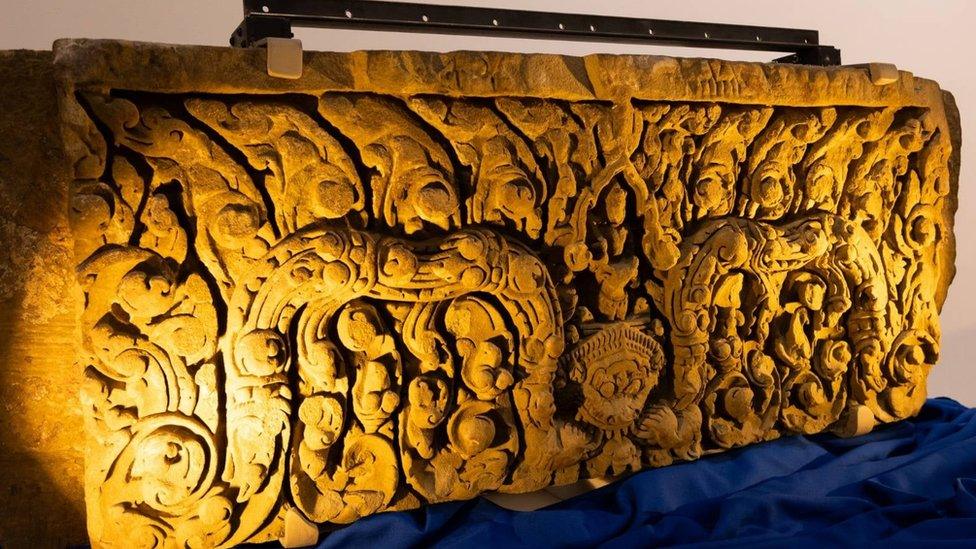US returns ancient stone carvings to Thailand
- Published

The stone lintels bearing intricate religious designs were created hundreds of years ago
Two ancient sandstone carvings, believed to have been stolen from Thailand and smuggled to the US during the Vietnam War, are being repatriated.
The carvings were originally lintels - support beams - in temples dating back to the 10th Century and feature the Hindu deities Indra and Yama.
For decades they have been on display in San Francisco's Asian Art Museum.
They are due to go on display at the National Museum in the Thai capital, Bangkok.
The San Francisco museum said it always wanted to return the beams to Thailand, but disputed experts' allegations that they had been stolen.
"We are very pleased that these lintels are going back to their country of origin," said Jay Xu, the museum director, in a statement.

The lintels have been on display at San Francisco's Asian Art Museum
The repatriation followed a three-year investigation by the US Department of Homeland Security.
Agents learned that the relics had been illegally imported, making them forfeitable under federal law, CBS reported. In February, the US reached a settlement with the city of San Francisco which agreed to forfeit the items.
Thai Fine Arts Department Director General Prateep Pengtako told AFP news agency that the lintels showed the influence of the ancient Khmer Kingdom, which was based in modern-day Cambodia.
"The lintels were assessed to be taken away some time between 1958 and 1969. In particular, 1965-66 saw a lot of Thai artefacts go missing," he said.
It is believed the artefacts came from Prasat Khao Lon historical sanctuary, in Sa Kaeo province, and Prasat Nong Hong, in Buri Ram province, the Bangkok Post reported, external.
A handover ceremony took place in Los Angeles earlier this week between US authorities and the Royal Thai Consulate General.

The repatriation ceremony in Los Angeles featured wreath laying, dancing and prayers
"The return of these antiquities holds great importance in terms of history, archaeology, and culture to the Thai government and the Thai people," the Thai foreign ministry said at the time.
"It is believed that both of the sacred lintels were illegally exported from Thailand around the 1960s during the Vietnam War."
In recent years, other countries have also seen calls to repatriate stolen artefacts.
In 2014 Australia agreed to return to India two ancient Hindu statues allegedly stolen from temples while last year France agreed to return to Senegal and Benin items that were looted during colonial times.
The artist cutting off the head of a British colonialist
Related topics
- Published30 November 2019

- Published30 October 2019

- Published14 March 2021
